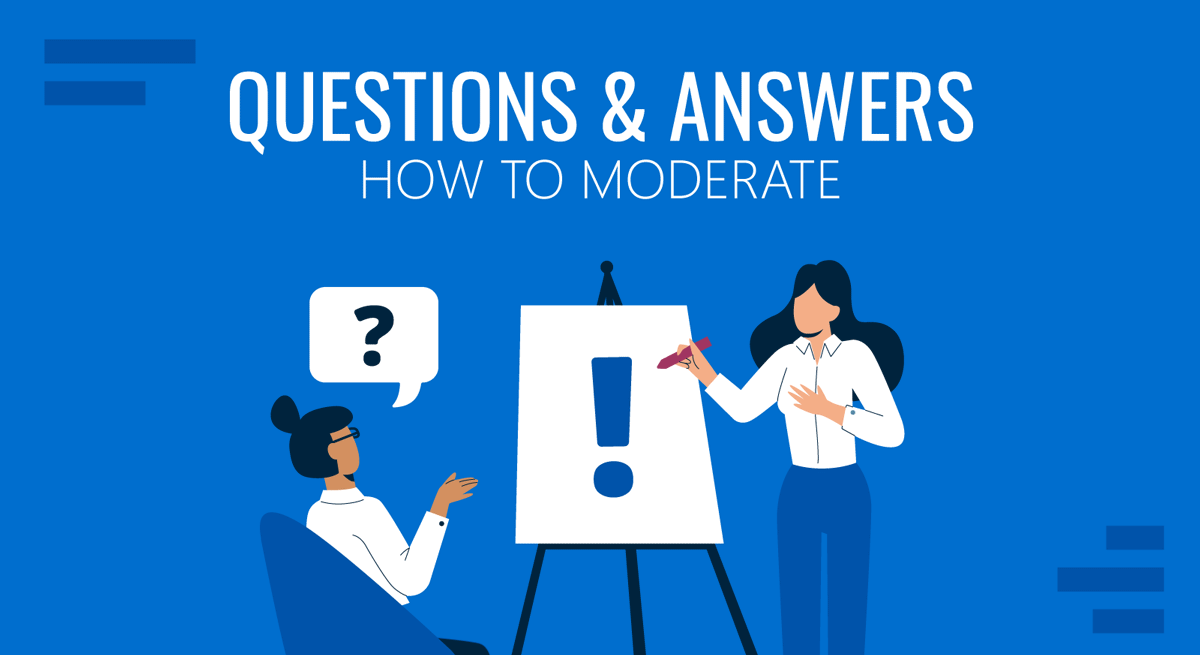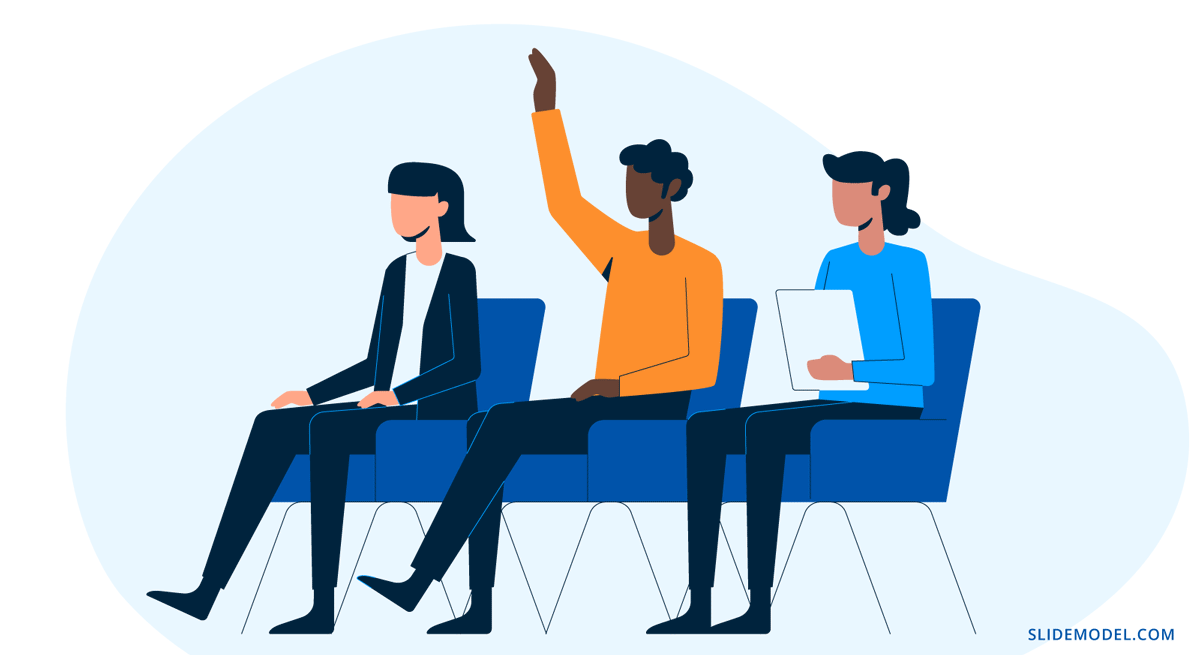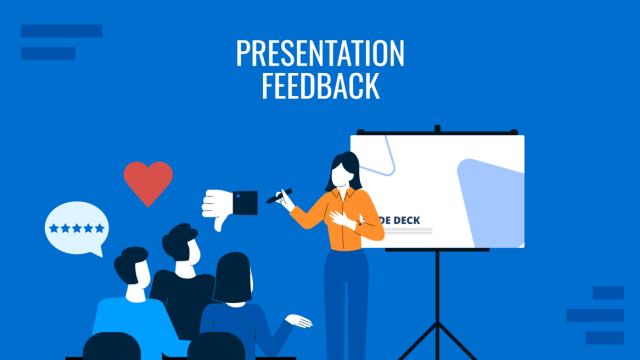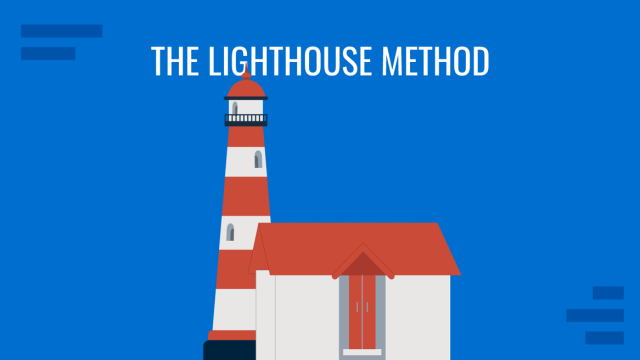
An unconventional question is the one thing that can ruin the presentation you’ve been preparing for. Picture this, you are in the middle of a talk, and someone from the audience shoots a query like a stray bullet. Now, you’re scratching for answers, and your credibility is in maximum exposure.
Questions play a significant role in enhancing the overall effectiveness of a presentation as it allows you to assess the audience’s understanding of the content you presented and engage with them on a deeper level. You don’t want to dodge the queries. Including a well-structured Q&A session within your presentation is vital.
This article explores how to moderate question and answer sessions effectively and how you can prepare for them.
Why Is Question-and-Answer Session Important?
So, why is it important to include a question-and-answer session in a presentation?
Dale Carnegie sums up the importance of questions in various aspects of life in his book, How to Win Friends and Influence People. “Questions are the key that unlocks doors of opportunity and locks out doubt and uncertainty,” he said.
Let’s look at the above quote through the lens of a presenter and break down the benefits that can turn out from a stressful Q&A session.
It provides clarification. During a Q&A session, participants can seek clarifications on any unclear points or misunderstandings. This allows presenters to address any misconceptions by providing additional information or context.
It allows you to overcome objections. Your audience may have concerns or doubts about your arguments. Use the Q&A session to listen to your audience’s concerns and address them directly. You may build trust and win over some audiences.
It demonstrates your expertise. A well-handled Q&A session can showcase your expertise and knowledge on the topic. By providing accurate and thoughtful responses to questions, you can establish yourself as an expert in your field, further reinforcing your credibility and authority.
It provides you with a different perspective. Through the questions asked during a Q&A session, you can gain insights into your audience’s perspectives. This will help you understand the audience’s needs and plan future presentations or business strategies.
Real-Life Scenarios for Q&A Sessions
Business Presentations. Q&A sessions are commonly used in business presentations, such as sales pitches and investor meetings. This allows you to address any concerns or objections of unconvinced prospects and help them arrive at a buying decision.
Training or Workshops. Q&A sessions are often included in training sessions or workshops, where participants may have questions about the material being taught or need further explanations. Q&A sessions can foster active participation, encourage learning, and provide opportunities for participants to seek clarification on concepts or practical applications.
Public Speaking Engagements. Q&A sessions are often included in public speaking engagements, such as conferences, seminars, and webinars. In these scenarios, the Q&A session allows the speaker to interact with the audience, address their concerns, and provide additional information.
Town Hall Meetings. Q&A sessions are often included in town hall meetings or open forums, where employees or stakeholders can ask questions to leadership or management. This allows for transparency, communication, and engagement with the audience, addressing their concerns or feedback.
A question and answer (Q&A) session can be helpful in various business scenarios, but it’s not mandatory for every presentation. Consider the nature of your presentation (is it complex?) and your audience’s needs and time constraints.
How to Prepare for a Q&A Session

Identify Potential Questions That May Come Up
The groundwork you do for your presentation, such as doing the research and preparing the PowerPoint template, pretty much prepares you for the potential questions that may arise during the big day.
In the planning phase of your presentation, you conduct research and gather relevant information on your topic. This includes identifying key points, data, statistics, and references you will present. Assuming that you don’t skip any of the background work, you’re on your way to answering questions confidently during the Q&A session.
Of course, you also have to consider the background of your audience. What are their demographics or their level of familiarity with the topic? This understanding will help you anticipate their questions and tailor responses that resonate with their perspective.
Establish Clear Guidelines for Questions
It is important to set ground rules on how you would like to address questions to ensure a smooth-sailing presentation. At the beginning of your talk, discuss the flow of your presentation, including when you’ll be entertaining queries from the audience.
If you want them to keep their questions at the end of the discussion, say so and allocate an ample time for Q&A. You should also establish clear guidelines on how they should ask their questions (e.g., raise their hand, submit in writing).
Some presenters would specify topics or areas they are willing to discuss. However, it is dangerous to come across as controlling or restrictive and may negatively impact the dynamics of the presentation.
In a sales pitch, for example, the goal of a Q&A is to build rapport and trust with the prospects. Dictating what questions they can ask may not align with the principles of customer-centric selling.
Encourage Pre-Session Questions
Encourage attendees to submit questions beforehand through email, a designated online platform, or in person. Doing so will provide you with valuable insights into your audience’s specific needs and expectations. It will also help you proactively address their concerns during your presentation without waiting for the Q&A segment.
Collect Questions During the Presentation
Attendees may forget their questions if they have to hold onto them until the Q&A session. Instead of saving all the questions for the end of the presentation, you can actively encourage the audience to submit questions during the presentation itself.
There are several ways to collect questions throughout the presentation. One common approach is to use a live chat or Q&A feature in virtual presentation platforms.
Another approach is to use audience response systems or polling tools, such as Mentimeter, Slido, or Poll Everywhere, allowing the audience to submit or vote on existing questions during the presentation.
The presenter or moderator can then periodically review the incoming questions and pick the most relevant to address in the Q&A.
Best Moderation Practices During Q&As

Choose the Right Time to Open the Floor to Questions
If your presentation is interactive and encourages audience participation, you can pause at certain points and invite questions from the audience. This approach can help keep the audience engaged and address immediate clarifications or concerns.
On the other hand, if you dedicated time to questions at the end of the presentation, you can announce when the Q&A portion began. A Q&A slide in the background may also help to set the mood.
Listen to the Whole Question
When moderating a Q&A, listening to the whole question actively is important. If you interrupt the participant before they finish their question, you risk misinterpreting them and missing important details. Jumping to conclusions or assumptions can lead to inaccurate or incomplete responses and may not fully address the participant’s concern.
The best practice is to give your undivided attention to the participant delivering the question and pause to come up with a thoughtful answer. This will also allow you to seek clarification to complex or ambiguous questions.
Keep Responses Succinct and On-topic
When addressing a question, keep it focused and brief. Avoid long-winded explanations or excessive details that go beyond the scope of the query.
The technique here is to structure your response in a logical and organized manner. For instance, you can start by restating the question, followed by your key points and some tangible examples.
Afterward, return to the questionnaire and ask if you can address their concern.
Redirect Irrelevant or Inappropriate Questions
It’s not new to encounter questions from the left field during Q&As. As the presenter, you can refuse to answer irrelevant questions.
However, if you think the questioner is genuinely curious, you may seek clarification to understand their perspective better. You may say along the lines of, “That’s an interesting question. Could you please provide more context or clarify how it relates to our current topic?”
If you still find the question irrelevant, you can politely decline to answer it. You can say, “Thank you for your question, but it seems unrelated to our presentation’s topic.”
Regardless of how you respond, it’s important to maintain professionalism and avoid being dismissive or confrontational.
Dealing With Aggressive or Hostile Participants During Q&As
Sometimes, one audience member will aggressively shoot up their hands to criticize and attack your presentation. And often, you cannot dismiss them. Remember, you must control this situation while still being diplomatic, no matter how tempting it is to push back aggressively.
A good tip from psychology professor Susan Fiske is to focus on what they’re saying rather than how they’re saying it. Avoid getting defensive or reacting emotionally to their tone, as it may escalate the situation.

When addressing their concern, start setting the common ground – mention where you agree. For example, you could say, “I appreciate your perspective on this issue, and I agree that…”
Let’s use this in a mock-up scenario.
Audience member: “I don’t think your marketing strategy will be effective; it’s too costly and doesn’t align with our target audience.”
Thank you for sharing your perspective. I appreciate your input on this issue, and I agree that cost-effectiveness and alignment with our target audience are critical considerations in our marketing strategy. The proposed strategy is based on market trends and consumer behavior data and has the potential to yield positive results. We value your input in helping us optimize our strategy, and I would be happy to discuss this further.
By actively acknowledging and expressing agreement, the speaker made the unconvinced audience feel heard while reassuring them that the marketing strategy had been carefully planned.
FAQs
Why is a question-and-answer (Q&A) session important in a presentation?
A Q&A session is important because it provides clarification, allows presenters to address audience concerns, demonstrates expertise, and provides insights into audience perspectives. It enhances engagement and ensures that the audience’s understanding aligns with the presentation’s objectives.
What are some real-life scenarios where Q&A sessions are commonly used?
Q&A sessions are commonly used in business presentations, training or workshops, public speaking engagements, and town hall meetings. They serve different purposes, such as addressing concerns, fostering learning, and providing opportunities for feedback.
How can I prepare for a Q&A session effectively?
To prepare for a Q&A session, anticipate potential questions by researching your topic thoroughly and understanding your audience’s background. Establish clear guidelines for when and how questions will be taken, encourage pre-session questions, and collect questions during the presentation to address them effectively.
What are some best practices for moderating Q&A sessions?
Best practices for moderating Q&A sessions include choosing the right time to open the floor to questions, listening to the whole question before responding, keeping responses succinct and on-topic, and redirecting irrelevant or inappropriate questions.
How should I handle aggressive or hostile participants during a Q&A session?
When dealing with aggressive or hostile participants, focus on what they are saying rather than their tone. Avoid getting defensive or reacting emotionally. Instead, acknowledge their concerns, express agreement where possible, and respond diplomatically to maintain a respectful dialogue.
Can I refuse to answer irrelevant questions during a Q&A session?
Yes, you can refuse to answer irrelevant questions. Politely redirect the conversation back to the topic by saying something like, “Thank you for your question, but it seems unrelated to our presentation’s topic.” Ensure you remain professional and avoid being dismissive.
How can I collect questions during a presentation?
Questions can be collected during a presentation using live chat or Q&A features on virtual presentation platforms or audience response systems and polling tools like Mentimeter, Slido, or Poll Everywhere. These tools allow the audience to submit or vote on questions in real time.
Why should I encourage pre-session questions?
Encouraging pre-session questions allows you to gain insights into your audience’s needs and expectations, helping you prepare better and proactively address their concerns during your presentation.
What should I do if a question requires a lengthy response?
If a question requires a lengthy response, provide a brief answer and offer to discuss it further after the presentation or in a follow-up. This ensures that the Q&A session remains concise and on-topic without deviating from the overall flow of the presentation.
How can I ensure a Q&A session runs smoothly?
To ensure a smooth Q&A session, set clear guidelines on how questions will be handled, manage the time allocated for questions, prioritize relevant queries, and maintain a professional tone throughout the session. Effective preparation and moderation skills are key to running a successful Q&A.
Conclusion
As you can see, a well-structured and effectively moderated question-and-answer (Q&A) session can greatly enhance the overall effectiveness of a presentation. By preparing for potential questions, setting clear guidelines, encouraging pre-session questions, and collecting questions during the presentation, you can be better equipped to handle questions from the audience.
Use the moderation tips we’ve provided in this article, so you can confidently navigate Q&A sessions and maintain your credibility with your audience.


